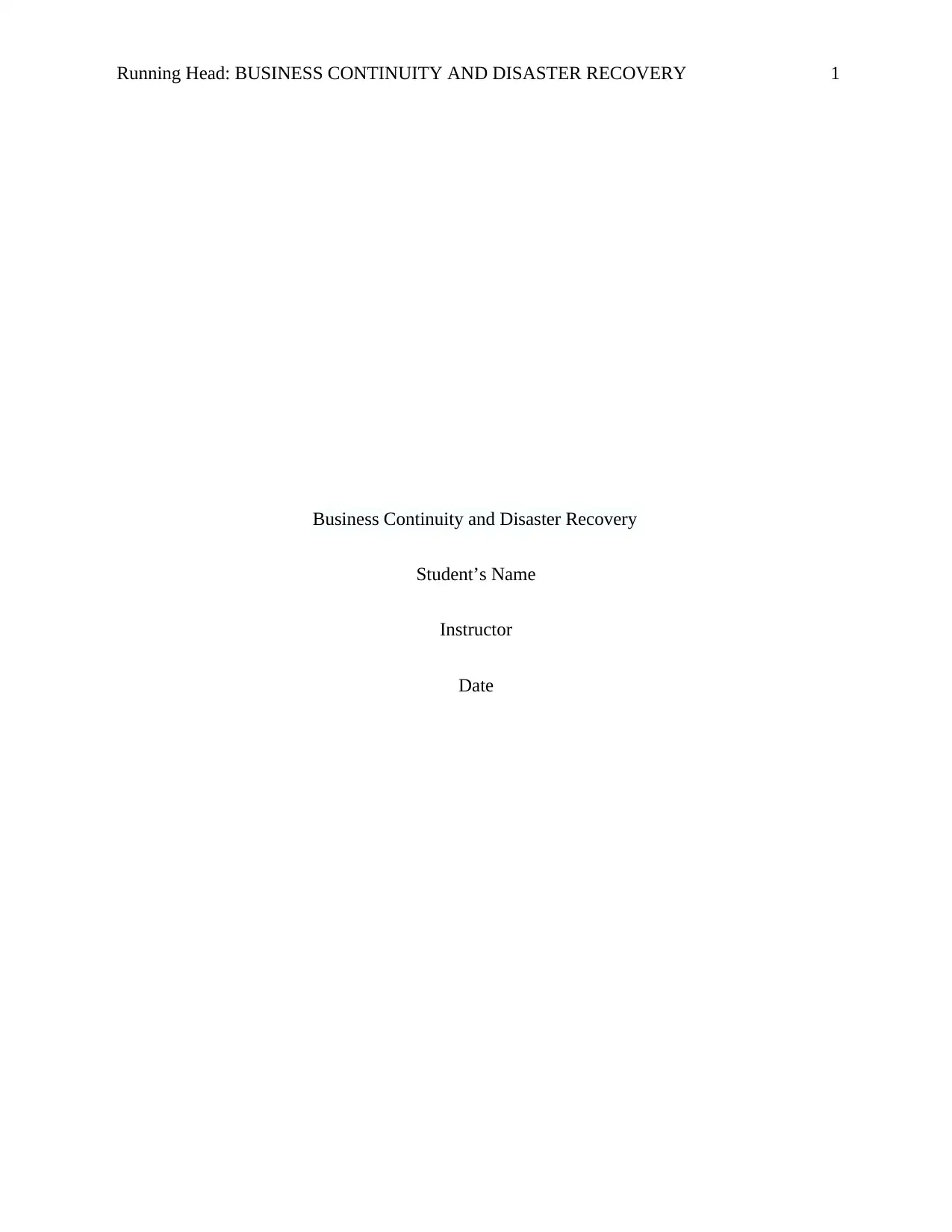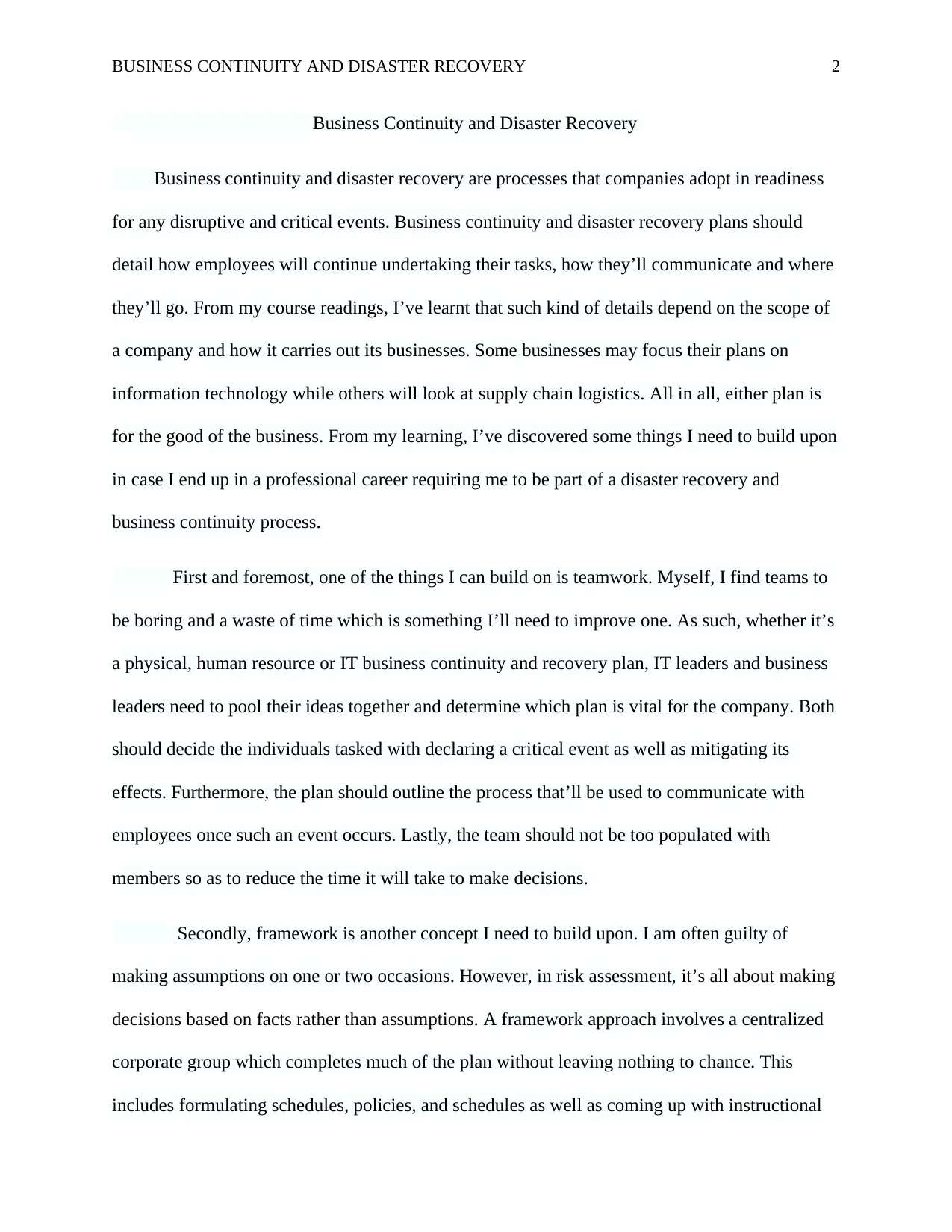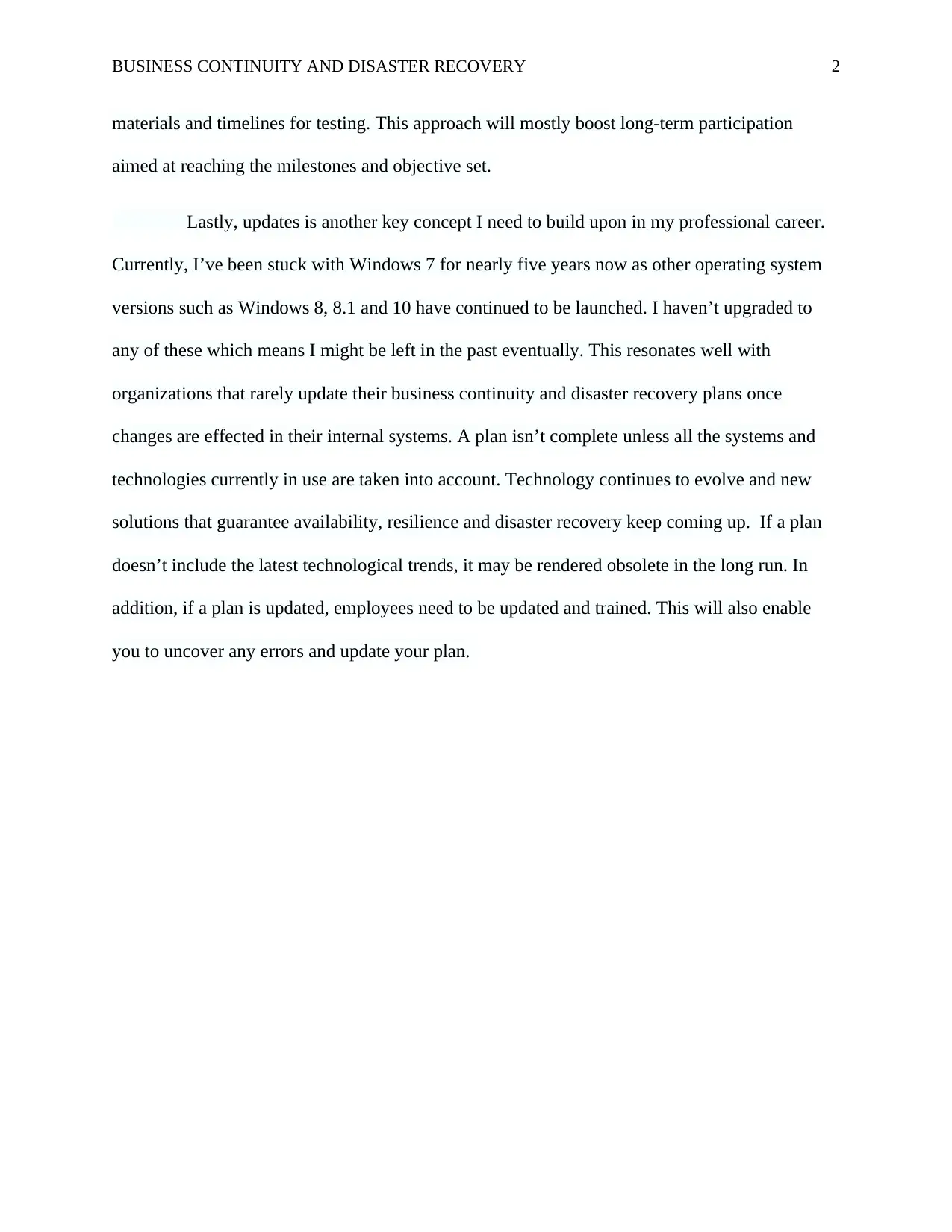Business Continuity and Disaster Recovery: Analysis Report
VerifiedAdded on 2020/04/15
|3
|612
|39
Report
AI Summary
This report delves into the critical aspects of business continuity and disaster recovery, emphasizing the importance of proactive planning and strategic implementation. The author highlights key concepts such as team-building, framework development, and the need for continuous updates to ensure plan effectiveness. The report underscores the significance of collaborative efforts between IT and business leaders, the reliance on factual data in risk assessments, and the necessity of incorporating the latest technological advancements into recovery plans. Furthermore, the report emphasizes the importance of employee training and regular plan revisions to maintain relevance and address emerging challenges. It stresses that businesses must be prepared for any disruptive event. The report covers the necessity of communication and outlines the processes used to communicate with employees once such an event occurs.
1 out of 3










![[object Object]](/_next/static/media/star-bottom.7253800d.svg)